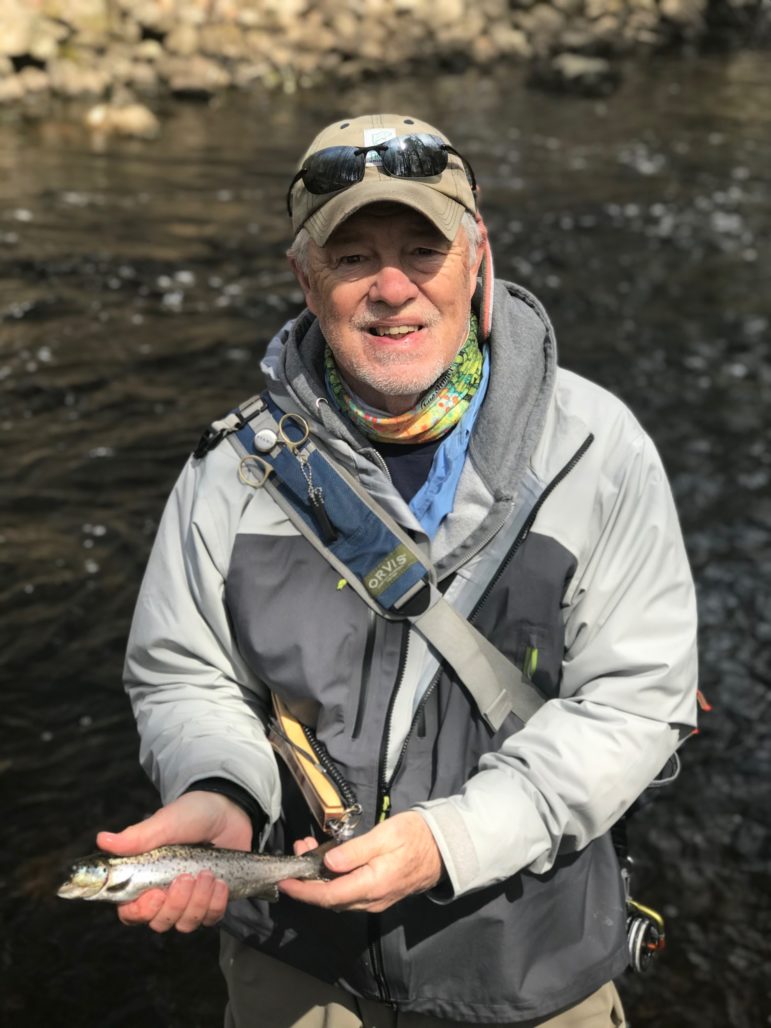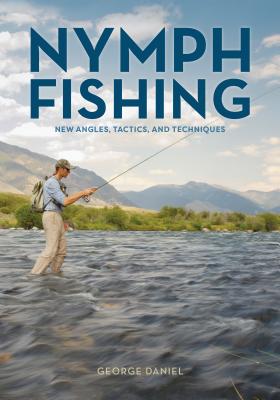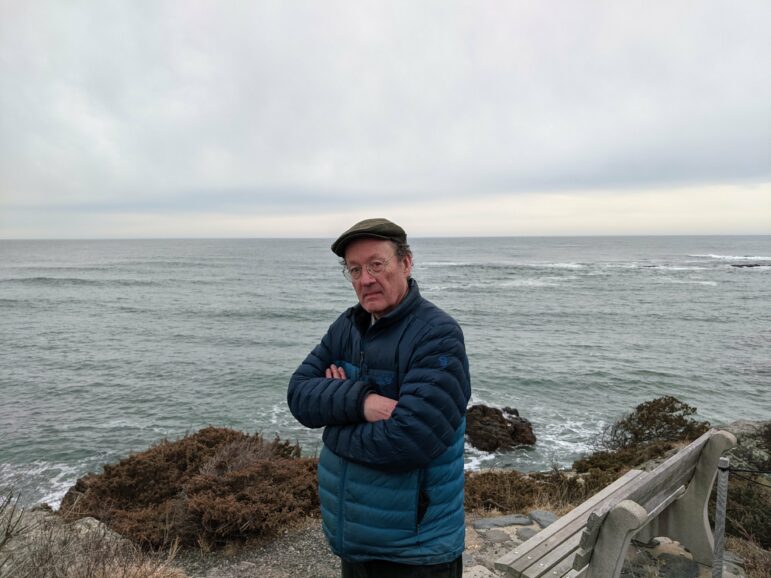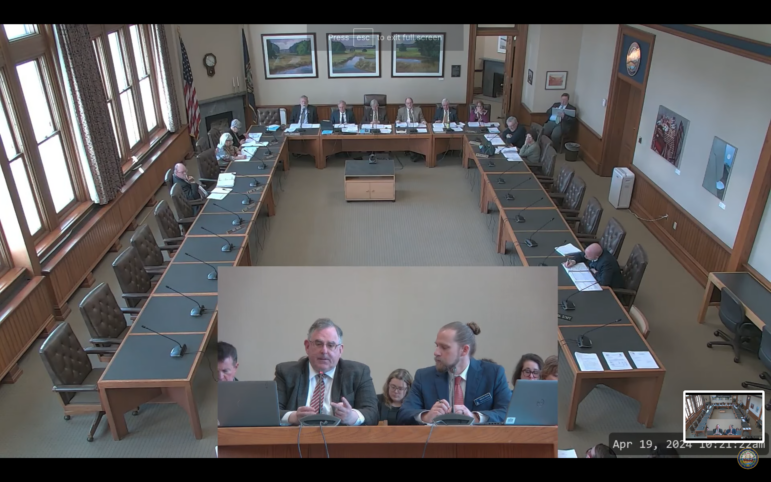WRITING ON THE FLY
By GEORGE LISET
Fly Fishing with nymphs, also known as Nymphing has really taken off over the last few years. The reason for this popularity is because Nymphing works! There is a “science” behind nymphing, which fly fishers begin to recognize as they spend more and more time on the water.
The whole premise of fly fishing is using a fake (artificial), fly (lure), that imitates some form of a natural insect in order to get a fish, hopefully a big one, to take it as food. If you can tie said artificial fly, and use it to catch a really big fish, that is a great accomplishment.
Entomologists have written thousands of books on the life cycle of the insect. For our purpose I’ll give you the Cliff notes on entomology. Insects basically have a larval stage, a nymph stage and a dry fly stage. The nymph stage is when they hatch from being a larva and swim along the bottom and eventually to the surface to become a dry fly to mate.

The idea of fishing nymphs is that fish spend 90% of their time below surface eating insects. So in order for a fly fisher to be more successful, the fly being fished, should be on or near the bottom of the river. This fact was driven home to me a few years back on a trip up north to the Pittsburg area. I was throwing streamers (fish and leech imitations) without much luck. I noticed across the river, a young man catching fish left and right. After a while, without much luck, I asked him if he would show me his set up.
The young man was using a suspension nymphing set up. This set up used an indicator, which was a small bobber, with a small weight attached to the leader at about one and a half times the depth of the river. From below the weight was attached a six-foot length of tippet material with a point (bottom) fly. Half way down that six foot section of tippet was tied on another fly (dropper fly) on a twelve inch length of tippet. Once I started fishing that set up, I began to catch fish. As my friend Rick says, If you’re not dragging (your fly on the bottom), you’re not bragging!”
Since I started fishing nymphs I have been on a journey to find a set up that worked for me. I have been reading books and watching YouTube videos to try and perfect my technique. What I have found is that there is no right way, but a lot of different ways to catch fish. Two great resources that I have been using for reference are George Daniel’s “Nymph Fishing” and George’s “Dynamic Nymphing.”
I have been using a ten-foot Douglas 3-4 weight rod with an Echo 3-4 reel. Fly fishers use one of two methods to Nymph fish, Suspension Nymphing (Using a suspension/ indicator device such as a bobber, yarn, wool or another top water fly that floats) or they Contact Nymph ( a.k.a. Euro nymphing, using no suspension devices). As I spend more time on the water, I am learning that each style has its place.
I have found that when the river runs fast and deep, or if I am trying to fish across seams in the river, Suspension Nymphing works best for me. Suspension Nymphing also allows me to use lighter flies. This is especially helpful in New Hampshire rivers where there can be a lot of sticks and debris that can snag a heavy fly.
I find I have more success with contact nymphing when the river is running slower and lower, and when I am fishing my files not much farther out than the length of my fly rod. The set up I use for Contact/ Euro Nymphing starts with a long 12-foot mono leader (not tapered, although I have used a tapered leader). I then tie on a tippet ring, then off that I tie on a 3-5 foot section of tippet. I then tie on my heavy point fly (With a tungsten bead or jig head). Half way down the tippet I tie a dropper fly with a little color.
I used this set up quite a bit last summer when the rivers and streams were really low. One change I made which worked for me was that i added a little weight above the tippet ring and used real small flies, size # 18-22, that had no bead heads. I found that my flies got hung up less and I caught more fish.
It is fun catching fish, and hard to change when a set up works. It is also fun to experiment with different set ups after you have caught some fish. This is something I am still working on. Winter fly fishing in New Hampshire is a great time to practice your nymphing techniques, and check George Daniel’s books for some reading material by the fire.
George Liset of Dover is an outdoor writer and avid fly fisherman who shares insights of his time on the water exploring New Hampshire streams and rivers as well of those around New England. George is a graduate of Wheaton College, Illinois, and the University of New Hampshire.





